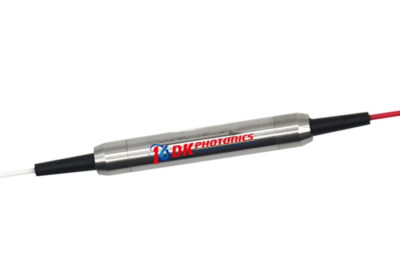When choosing optical modules, evaluate the consistency and dependability of optical module functions, pricing and quality, and whether or not they meet network equipment compliance and data transmission standards.
Here we will see which optical module parameters you should be aware of when looking for an optical passive component manufacturer.
-
Interaction Rate
You must validate the rate supported by the switch port before picking the rate of an optical module and then choose the rate of the optical module depending on the rate supported by the switch. Optical modules can operate at FE (155M), GE (1.25G), 10GE, 25GE, 40GE, 100GE, or 400GE speeds. Furthermore, fiber channel 8G and 16G rates are extensively utilized for storage networks (SAN).
-
Distance of transmission
Different optical modules are available with varying speeds, wavelengths, and packages to support different transmission distances. As a result, determining transmission distances is critical.
Optical module luminescence changes depending on distance requirements. As a result, the length of the optical cable must be considered to ensure that the received optical power is less than the excess optical power. If the optical fiber is short, employ its optical attenuation (dB/km) to prevent overheating the peer optical module.
-
Type of Optical Fiber
Single-mode and multimode optical fibers are the two types of optical fibers. 1310nm and 1550nm are the central wavelengths of single-mode optical modules used with single-mode optical fibers. Single-mode fiber offers a huge transmission capacity and transmission frequency bandwidth, making it ideal for long-distance transmission.
Multimode fiber has a mode dispersion flaw, and its transmission performance is inferior to single-mode fiber, but it is inexpensive and ideal for low-capacity, short-distance transmission.
-
Optical Fiber Interface
Typical module interfaces include LC, SC, MPO, and others; however, you should consider the project’s cost and future upgrading.
Since different optical modules have varying optical fiber interfaces, you must first identify the optical module’s matching optical fiber interface before buying the appropriate optical fiber patch cord.
-
Operating Temperature
The optical module’s working temperature varies from 0°C to 70°C for commercial, -20°C to 85°C for extension, and -40°C to 85°C for industrial.
Commercial and industrial variants of optical modules with the same packaging, rate, and transmission distance are available. Industrial-grade items are more costly due to the usage of temperature-resistant technology. Set the optical module’s operating temperature based on the actual working environment.
-
Compatibility
Since big equipment providers want to deliver consistent products and services, they tend to shut down the ecosystem. As a result, optical modules from various manufacturers cannot be integrated. To prevent incompatible devices, you must explain the devices on which the optical module will be used when ordering an optical module.
-
Cost
Optical modules are often pricey, depending on the brand of optical modules and the equipment brand. Third-party optical modules have the same performance and quality as brand optical modules, but they are significantly less expensive.
Before all products leave the plant, a professional optical passive component manufacturer performs product characteristic efficiency testing, appearance testing, compatibility, interoperability testing, and optical end-face cleaning to ensure that you receive high-quality optical modules.


Leave A Comment